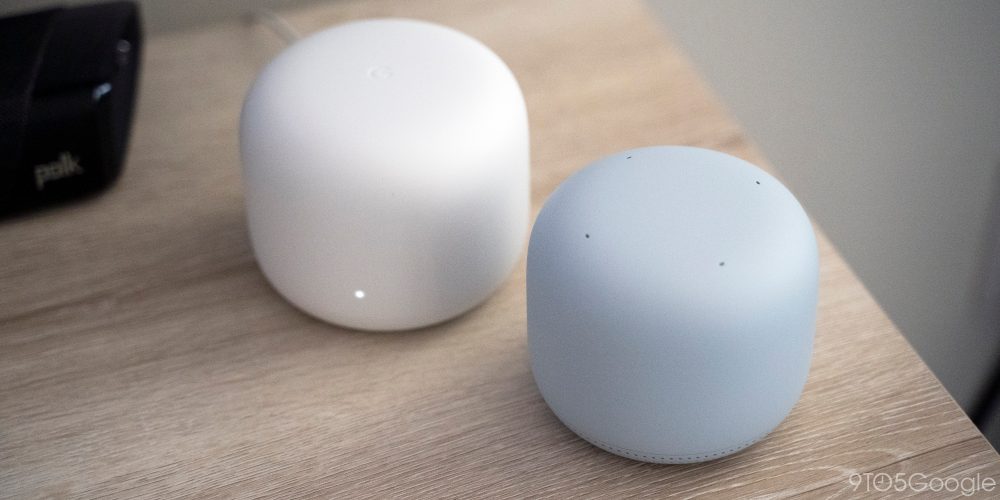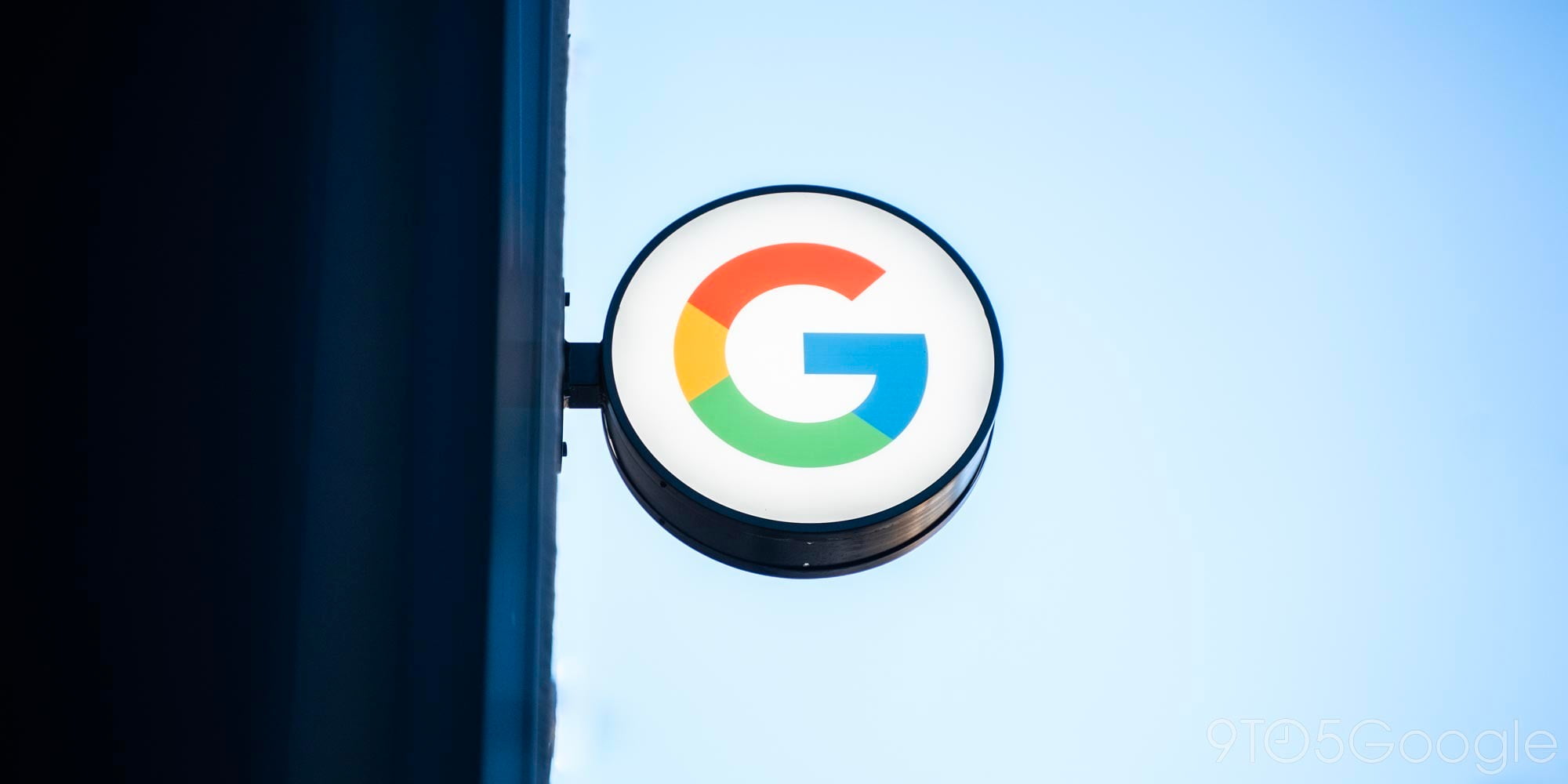
Whether you’re looking to improve your home’s Wi-Fi signal or just trying to squeeze a little better performance from your network for Google Stadia, a mesh system like Nest Wifi may be just what you’re looking for. We got the chance to spend a few weeks with both the main Nest Wifi router and the separate Nest Wifi point with built-in Google Assistant speaker to review what they each bring to the table.
Setting up Nest Wifi
Like any other router, Nest Wifi is a “set it and forget it” device. That being the case, I’ve devoted a large portion of this review to the process of setting up Nest Wifi.
Given how complicated setting up a mesh network can sound to someone who is not tech-savvy, Google needed to make a strong first impression that says “easy to use.” At every step of the process, Nest Wifi delivers on that promise.
Easy to unpack
The clearest showing of this is in the packaging of the Nest Wifi. Immediately on the inside of the two-pack box were the two largest components of Nest Wifi, the router, and the point. This allowed me to quickly understand their size and estimate where I’ll want to place them.
Beneath these were the manuals and two power adapters, each easily removed from the box while remaining tidy, thanks to the included wire clips. Finally, the ethernet cable for connecting the main router to your modem is in a separate, easy-to-open cardboard compartment.
As someone who has unboxed and set up more than my fair share of routers while working IT, Nest Wifi was by far the easiest to get unpackaged. I know many would consider that a minor detail, but it genuinely stood out as a positive experience for me.
Easy to connect
As mentioned, the only wires included with Nest Wifi are the power adapters — one for each device — and the single Ethernet cable. The lack of a second Ethernet cable for connecting something directly to the router is a bit disappointing, but I’d wager most households have at least one spare cable laying around.
Once you’ve connected the router to power and an internet connection, you’re ready to set up your network. Unlike Google’s previous generation of mesh networking, Google Wifi, you don’t need a special app to set up or manage Nest Wifi. Using the Google Home app, you can add the Nest Wifi router and points to your home just like any other Chromecast or Assistant speaker.
Step-by-step, the Google Home app walks you through the process of setting up your new mesh network, which mostly consists of scanning QR codes, picking a good network name and password, and setting up Voice Match.
Easily, the toughest step along the way is deciding on a suitable name for your network and a secure password to match it. Unlike most routers, Nest Wifi does not offer any presets for these, leaving you to your imagination. With as much havoc as an unsecure network can bring, I’m surprised Google isn’t more opinionated on this step.
Nest Wifi makes for a solid router
Once you’re through setup, the router portion of Nest Wifi slips quietly into the background, just like any other router should. Simply connect your devices and get back online.
On the networking side of things, there are honestly only two key advantages that Nest Wifi has over other mesh systems like Eero. The first is that deep integration with the Google ecosystem allows for small but sometimes useful features like quickly displaying your guest network password on any Google Assistant smart display such as the Nest Hub.
Google Stadia optimized
Secondly — and for my personal use, more importantly — Nest Wifi offers a “Gaming preferred mode” optimized for Google Stadia, the company’s recently launched game streaming service. With “Gaming Preferred” enabled, when Nest Wifi detects that a device has begun streaming from Stadia, it will attempt to give that device a higher priority over other devices. In other words, if you’re playing Stadia and a family member starts streaming Disney+, your gameplay shouldn’t be affected.
This sort of optimization can be done manually via QoS settings on other routers by someone who knows what they’re doing, but, given the multi-device capabilities of Google Stadia, manually configuring these settings could still prove difficult. Offering this as a simple on/off toggle is an incredible boon for the Nest Wifi.
In practice, I can say that between switching from a single router to a Nest Wifi two pack, and enabling Gaming Preferred Mode, the number of issues I’ve had with Google Stadia has gone significantly down during my review period. This has been especially true when playing from my Pixel phone, which was previously my least stable Stadia device, experiencing frequent disconnections.
Unfortunately, I don’t have any definitive way to prove whether these benefits are a result of Gaming Preferred Mode or if they’re simply due to improved Wi-Fi signal in my home.
No Wi-Fi 6 support
The only negative thing I can truly say in this review about the Nest Wifi as a router is that it’s not futureproof. Last year, the first Wi-Fi 6 certified devices began reaching people’s homes. CES 2020 also introduced a host of new devices that support the burgeoning Wi-Fi standard, including Chromebooks like the Samsung Galaxy Chromebook.
Despite this, Nest Wifi is only Wi-Fi 5 (previously known as 802.11ac) compatible. As the router is the central hub of your home’s network and something you don’t expect to replace often, it’s disappointing to purchase a router that has anything less than the best technology available. Simultaneously, in the near-term, the advantages of Wi-Fi 6 will be irrelevant to all but the most tech-savvy among us.
Nest Wifi point makes an even better speaker
Where the Nest Wifi system truly sets itself apart is in its ability to be multipurpose. The main Nest Wifi router is still just a router, no different than the past Google Wifi system. However, there are now separate Nest Wifi points which double as Google Assistant speakers — and good ones at that!
My first impression review after setting it up and turning on some tunes was that the Nest Wifi point sounds fantastic. Especially by comparison to the Google Home Mini that previously occupied my bedroom, the difference is night and day.
Drums and bass guitar come through clearly and powerfully in a way that I absolutely did not expect from a device whose primary purpose is to be a Wi-Fi point. I actually used the equalizer in the Google Home app to dial the bass back a bit. After that adjustment, the rest of the sound profile came alive, with cymbals and higher-end vocals sounding particularly crisp.
Beyond that, the Nest Wifi point is just like any other Google Home/Nest speaker. Calling out the usual “Hey Google” invocation triggers the same Google Assistant. About the only difference is that the Nest Wifi point has a ring light around its base that illuminates when the Assistant is initiated. The brightness of this light can be adjusted, or it can be disabled altogether.
Should you buy Nest Wifi?
As our homes become more filled with Wi-Fi demanding devices, the near necessity of a mesh network is slowly becoming unavoidable. For now though, mesh Wi-Fi systems are premium products that demand a premium price, and Nest Wifi is no different.
If the Google Assistant is your home voice AI of choice, you have two solid choices to review: 2017’s Google Wifi and the new Nest Wifi. Yes, despite the Nest Wifi being poised as the clear successor and replacement to the Google Wifi, both products are still available for purchase for the time being.
That fact is further complicated by Google Wifi having a nearly identical feature set — minus the smart speaker capabilities — and a reduced price tag. In fact, you can currently purchase a Google Wifi three-pack for less than a Nest Wifi two-pack. The older system does require a slightly more difficult setup and management process, if only that you may need the separate Google Wifi app for certain tasks.
Unless you have a specific desire to put a Google Assistant smart speaker in the exact same place that you would put a mesh Wi-Fi point, it’s hard to justify the Nest Wifi’s current pricing. On the flip side though, Marie Kondo would probably be proud of Google’s effort to fold two disparate everyday devices into one form.
That said, on the whole, I thoroughly enjoyed having the Nest Wifi system during my review period and I can strongly recommend it to any networking novices for its ease of setup and wildly impressive audio quality.
Nest Wifi comes in packs of one (router) for $169, two (router + point) for $269, and three (router + two points) for $349, and is available from most of your favorite retailers including B&H Photo, Amazon, Best Buy, and the Google Store.
FTC: We use income earning auto affiliate links. More.







Comments